2024 Coastal Prairies Restoration Practitioners Forum
The University of Houston Coastal Center and the Texas Parks and Wildlife Department co-hosted the third annual Coastal Prairies Restoration Practitioners Forum on April 17–18, 2024, in Cove, Texas. After the successful 2023 forum in Goliad — highlighted by the dancing Attwater’s prairie chicken — we moved to the eastern Texas Gulf Coast Prairie. However, regardless of the forum location, we always address topics that will apply to any practitioner in the coastal prairie universe.
Forum sessions covered topics useful for hands-on practitioners who make decisions on measurement and monitoring of soil carbon, using Floral Quality Assessment to monitor prairie ecology, managing invasive species, drone technology, managing a wetland and coastal prairie matrix, and prescribed grazing. Two coastal prairie case studies were presented for discussion. The forum was structured to allow presenters time for an in-depth discussion with attendees in the auditorium and in the field.
Attendees had the opportunity for field trips to discuss restoration strategies at sites where prairie restoration and management are in progress.
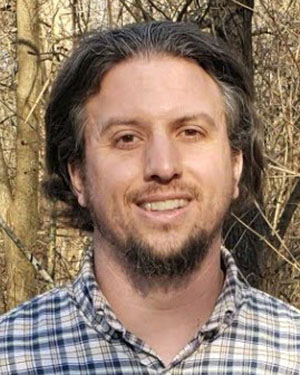 Mike is an ecologist with Resource Environmental Solutions (RES), specializing in
plant ecology, ecological restoration, soil carbon, and plant-soil nutrient dynamics.
Based out of the Chicago region, tallgrass prairie restoration is his passion. His
recent work has focused on the connections between soil carbon, vegetation, and climate
in tall- and shortgrass prairies, and the effects of grazing practices on bird habitat
in southeastern US ranches.
Mike is an ecologist with Resource Environmental Solutions (RES), specializing in
plant ecology, ecological restoration, soil carbon, and plant-soil nutrient dynamics.
Based out of the Chicago region, tallgrass prairie restoration is his passion. His
recent work has focused on the connections between soil carbon, vegetation, and climate
in tall- and shortgrass prairies, and the effects of grazing practices on bird habitat
in southeastern US ranches.
Contact Information
mszuter@res.us
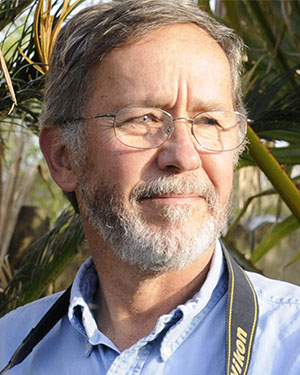 Larry received his undergraduate degree in Horticulture at the University of Southwestern
Louisiana (USL) in 1975. He worked as a plant propagator and grower before opening
his own nursery and landscaping company in Jeanerette, La. in 1980. In 1992 he returned
to USL (now the University of Louisiana at Lafayette) to get his Master’s degree in
biology. From 1995 to retirement, he worked as a botanist at the USGS National Wetlands
Research Center in Lafayette, La. His research interests include ecology of grasslands,
fire, and insect pollination as well as prairie restoration, and invasive species.
He has authored several papers and digital products including Coastal Prairie Restoration
Information System (software), USFWS brochure “Paradise Lost, the Coastal Prairie
of Texas and Louisiana”, and the USGS web page: “Guide to the Plants of Louisiana”.
Today he owns and operates a small farm and studies Agroecology, sustainable farming,
and restoration of native grasslands.
Larry received his undergraduate degree in Horticulture at the University of Southwestern
Louisiana (USL) in 1975. He worked as a plant propagator and grower before opening
his own nursery and landscaping company in Jeanerette, La. in 1980. In 1992 he returned
to USL (now the University of Louisiana at Lafayette) to get his Master’s degree in
biology. From 1995 to retirement, he worked as a botanist at the USGS National Wetlands
Research Center in Lafayette, La. His research interests include ecology of grasslands,
fire, and insect pollination as well as prairie restoration, and invasive species.
He has authored several papers and digital products including Coastal Prairie Restoration
Information System (software), USFWS brochure “Paradise Lost, the Coastal Prairie
of Texas and Louisiana”, and the USGS web page: “Guide to the Plants of Louisiana”.
Today he owns and operates a small farm and studies Agroecology, sustainable farming,
and restoration of native grasslands.
Contact Information
larryallain@gmail.com
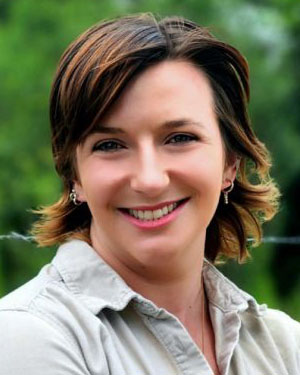 Schyler’s work with Wildlife Habitat Federation focuses on the Greater Houston area
of the Upper Texas Gulf Coast. She plans, inventories, implements, monitors, and accelerates
conservation planning efforts. Previously, she assisted with habitat management at
Coastal Prairie Conservancy, was a conservation intern with Houston Parks and Recreation
Department, and interned with the City of San Marcos working on riparian corridor
habitat conservation. Schyler holds a Professional Science Master’s degree in Environmental
Sustainability and Natural Resource Management from Texas Tech University and a B.G.S.
in Nature and Heritage Tourism, Animal Science, and Criminal Justice from Texas State
University.
Schyler’s work with Wildlife Habitat Federation focuses on the Greater Houston area
of the Upper Texas Gulf Coast. She plans, inventories, implements, monitors, and accelerates
conservation planning efforts. Previously, she assisted with habitat management at
Coastal Prairie Conservancy, was a conservation intern with Houston Parks and Recreation
Department, and interned with the City of San Marcos working on riparian corridor
habitat conservation. Schyler holds a Professional Science Master’s degree in Environmental
Sustainability and Natural Resource Management from Texas Tech University and a B.G.S.
in Nature and Heritage Tourism, Animal Science, and Criminal Justice from Texas State
University.
Contact Information
sky.rhea@whf-texas.org
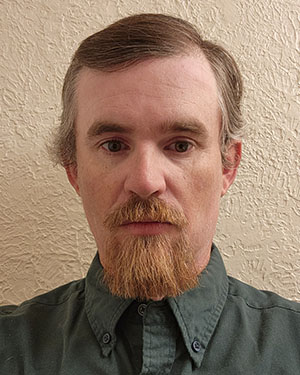 Philip grew up mostly in Port Arthur, TX, spending much of his free time hunting and
fishing in the marshes of the Salt Bayou system. He received a B.S. in Wildlife and
Fisheries Management with an emphasis in Wildlife Management from Texas &M University
in 2010 while gaining experience with both TPWD and USFWS as an intern. Subsequently,
Philip worked as a seasonal with USFWS at Anahuac NWR before becoming a Fish and Wildlife
Technician at the J.D. Murphree Wildlife Management Area. He worked in that capacity
for 10 years before becoming a Wildlife Biologist at J.D. Murphree WMA.
Philip grew up mostly in Port Arthur, TX, spending much of his free time hunting and
fishing in the marshes of the Salt Bayou system. He received a B.S. in Wildlife and
Fisheries Management with an emphasis in Wildlife Management from Texas &M University
in 2010 while gaining experience with both TPWD and USFWS as an intern. Subsequently,
Philip worked as a seasonal with USFWS at Anahuac NWR before becoming a Fish and Wildlife
Technician at the J.D. Murphree Wildlife Management Area. He worked in that capacity
for 10 years before becoming a Wildlife Biologist at J.D. Murphree WMA.
Contact Information
Philip.Pauling@tpwd.texas.gov
409-736-2551, ext. 34 (Office)
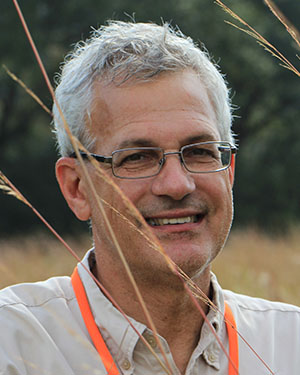 Andrew has been employed by Texas Parks and Wildlife Department beginning in 1990
when he conducted environmental assessments on development and navigation projects
as well as implementing habitat restoration works. Since 2005, he has managed and
restored native landscapes at southeast Texas state parks. Andrew earned B.S. in Forestry
and Wildlife Management at Purdue University and a M.S. studying wetland ecology from
Texas A&M University.
Andrew has been employed by Texas Parks and Wildlife Department beginning in 1990
when he conducted environmental assessments on development and navigation projects
as well as implementing habitat restoration works. Since 2005, he has managed and
restored native landscapes at southeast Texas state parks. Andrew earned B.S. in Forestry
and Wildlife Management at Purdue University and a M.S. studying wetland ecology from
Texas A&M University.
Contact Information
andrew.sipocz@tpwd.texas.gov
281-456-8266, ext. 229 (Office)
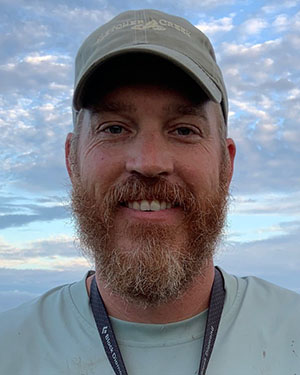 Trey Barron began his career with the Texas Parks and Wildlife Department in 2011
as a wildlife biologist in the Texas panhandle. In May of 2014, he moved to the coast
to serve as wildlife biologist for Victoria, Refugio, and Calhoun counties. Trey is
now the Wildlife Diversity (non-game) Biologist for Regions IV and V and is focused
on species of greatest conservation need. He received his Bachelor of Science in Wildlife
Biology and Master of Science in Biology from West Texas A&M University. He enjoys
helping landowners manage habitat for a variety of species, but is especially interested
in birds and herps.
Trey Barron began his career with the Texas Parks and Wildlife Department in 2011
as a wildlife biologist in the Texas panhandle. In May of 2014, he moved to the coast
to serve as wildlife biologist for Victoria, Refugio, and Calhoun counties. Trey is
now the Wildlife Diversity (non-game) Biologist for Regions IV and V and is focused
on species of greatest conservation need. He received his Bachelor of Science in Wildlife
Biology and Master of Science in Biology from West Texas A&M University. He enjoys
helping landowners manage habitat for a variety of species, but is especially interested
in birds and herps.
Contact Information
Trey.Barron@tpwd.texas.gov
361-576-0022 (Office)
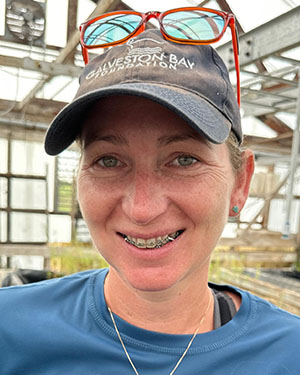 Ricci is the Conservation Stewardship Manager at the Galveston Bay Foundation (GBF)
where she is responsible for promoting high species diversity, improving hydrologic
function, and increasing wildlife habitat through vegetation management on protected
lands that are sensitive to the health of Galveston Bay. She oversees monitoring of
GBF’s properties and manages upland native plant and emergent freshwater wetland nurseries.
Her interests are botany and vegetation inventory and monitoring, and her goal is
to become an expert in Gulf Coast prairie restoration. Ricci has a B.S. in Wildlife
Fisheries Sciences and Rangeland Ecology Management from Texas A&M University and
an M.S. in Hydrology from Boise State University.
Ricci is the Conservation Stewardship Manager at the Galveston Bay Foundation (GBF)
where she is responsible for promoting high species diversity, improving hydrologic
function, and increasing wildlife habitat through vegetation management on protected
lands that are sensitive to the health of Galveston Bay. She oversees monitoring of
GBF’s properties and manages upland native plant and emergent freshwater wetland nurseries.
Her interests are botany and vegetation inventory and monitoring, and her goal is
to become an expert in Gulf Coast prairie restoration. Ricci has a B.S. in Wildlife
Fisheries Sciences and Rangeland Ecology Management from Texas A&M University and
an M.S. in Hydrology from Boise State University.
Contact Information
rsimmons@galvbay.org
832-536-2276 (Direct), 281-332-3381, ext. 224 (Main)
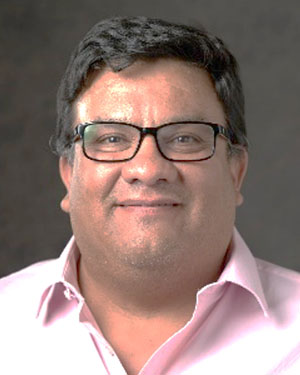 Humberto Perotto joined Texas A&M University’s Department of Rangeland, Wildlife and
Fisheries Management in 2023. His research focuses on the effect of rangeland cover
spatial configuration in ecological processes at multiple scales and includes analysis
of spatial and temporal dynamics of invasive plant species in rangelands. He seeks
to improve the understanding of how processes (for example:. human activities, grazing
behavior) interact with spatial patterns (for example:. vegetation, soils, land use)
with consequences for wildlife habitat and ecosystem function. He uses drones to assess
vegetation cover, spatial structure, forage mass estimation and wildlife aerial surveys.
Humberto Perotto joined Texas A&M University’s Department of Rangeland, Wildlife and
Fisheries Management in 2023. His research focuses on the effect of rangeland cover
spatial configuration in ecological processes at multiple scales and includes analysis
of spatial and temporal dynamics of invasive plant species in rangelands. He seeks
to improve the understanding of how processes (for example:. human activities, grazing
behavior) interact with spatial patterns (for example:. vegetation, soils, land use)
with consequences for wildlife habitat and ecosystem function. He uses drones to assess
vegetation cover, spatial structure, forage mass estimation and wildlife aerial surveys.
In 2004, he created the Bolivian Natural Resources Digital Center. He collaborated with Museo de Historia Natural Noel Kempff Mercado (Santa Cruz, Bolivia) to launch the Geospatial Center for Biodiversity 2013. Humberto has been part of research teams in the United States., United Kingdom., Bolivia, and Puerto Rico in the fields of rangeland ecology, wildlife ecology, livestock-wildlife interactions and their integration at different scales. He received his B.S. in Agronomy from Universidad Mayor de San Simon, Cochabamba, Bolivia. His M.S. in Forestry and Ph.D. in Rangeland Ecology and Management were both earned at Texas A&M University.
Contact Information
Humberto.perotto@ag.tamu.edu
979-314-8466
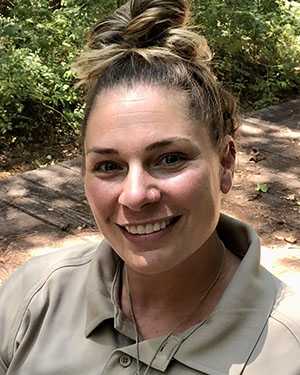 Kristin Fritz-Grammond, currently serves in dual roles at the Texas Chenier Plain
National Wildlife Refuge Complex (TCP) – both as Refuge Manager for Anahuac National
Wildlife Refuge (NWR) and as Deputy Project Leader for TCP. Her M.S. in Wildlife and
Fisheries Science is from South Dakota State University and her B.S.in Natural Resources
Management and Water Resource Management is from the University of Minnesota. Kristin’s
career began in wildlife management with the Forest Service, then moved to the Minnesota
Department of Natural Resources, and now has served 15+ years with United States.
Fish and Wildlife Service. Kristin’s last duty station before moving to Texas 9 years
ago, was Big Stone NWR which fell within the prairie pothole and northern tallgrass
region.
Kristin Fritz-Grammond, currently serves in dual roles at the Texas Chenier Plain
National Wildlife Refuge Complex (TCP) – both as Refuge Manager for Anahuac National
Wildlife Refuge (NWR) and as Deputy Project Leader for TCP. Her M.S. in Wildlife and
Fisheries Science is from South Dakota State University and her B.S.in Natural Resources
Management and Water Resource Management is from the University of Minnesota. Kristin’s
career began in wildlife management with the Forest Service, then moved to the Minnesota
Department of Natural Resources, and now has served 15+ years with United States.
Fish and Wildlife Service. Kristin’s last duty station before moving to Texas 9 years
ago, was Big Stone NWR which fell within the prairie pothole and northern tallgrass
region.
Contact Information
Kristin_Fritz@fws.gov
409-267-3337, ext. 123 (Office)
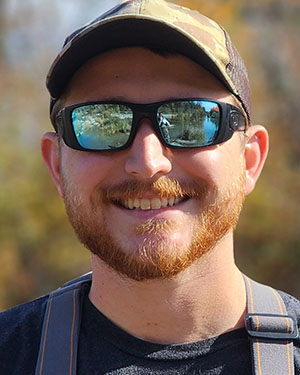 Hunter is a wetland ecologist, employed by Resource Environmental Solution in Bellaire,
TX. He is primarily responsible for planning, managing, monitoring, and maintaining
wetland restoration sites for the purpose of mitigation. Projects include bottomland
hardwood reforestation, emergent wetland prairie and depression design, and beneficial
use placement of dredged material to reverse salt marsh subsidence. Growing up in
the Katy Prairie when he didn’t know what the Katy Prairie was, and being raised in
the outdoors fostered a desire to conserve and restore the environment around him.
Hunter received dual B.S. degrees in Wildlife and Fisheries Science and Rangeland
Ecology from Texas A&M University. Throughout college, he interned at SWCA Environmental
Consulting, an experience which taught him as much or more about restoration work
as his degrees.
Hunter is a wetland ecologist, employed by Resource Environmental Solution in Bellaire,
TX. He is primarily responsible for planning, managing, monitoring, and maintaining
wetland restoration sites for the purpose of mitigation. Projects include bottomland
hardwood reforestation, emergent wetland prairie and depression design, and beneficial
use placement of dredged material to reverse salt marsh subsidence. Growing up in
the Katy Prairie when he didn’t know what the Katy Prairie was, and being raised in
the outdoors fostered a desire to conserve and restore the environment around him.
Hunter received dual B.S. degrees in Wildlife and Fisheries Science and Rangeland
Ecology from Texas A&M University. Throughout college, he interned at SWCA Environmental
Consulting, an experience which taught him as much or more about restoration work
as his degrees.
Contact Information
hthompson@res.us
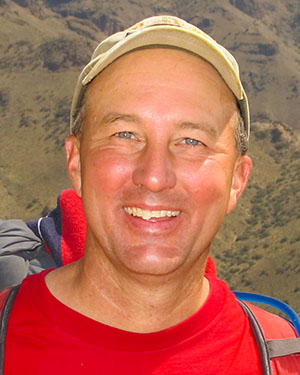 Jason has served as a botanist/plant ecologist for Texas Parks and Wildlife Department
for 29 years. He has a research affiliation with the Baylor and University of Texas
Herbarium and Botanical Research Institute of Texas. He maps, surveys, and documents
rare habitats on conservation-friendly private lands state-wide. This data is used
to preserve many rare and declining plant and animal species as important conservation
values of intact private landowner landscapes. When appropriate, he encourages private
landowners to permanently conserve their lands. He oversees state/federally funded
university research of the 226 rare plant communities tracked in the Texas Conservation
Action Plan.
Jason has served as a botanist/plant ecologist for Texas Parks and Wildlife Department
for 29 years. He has a research affiliation with the Baylor and University of Texas
Herbarium and Botanical Research Institute of Texas. He maps, surveys, and documents
rare habitats on conservation-friendly private lands state-wide. This data is used
to preserve many rare and declining plant and animal species as important conservation
values of intact private landowner landscapes. When appropriate, he encourages private
landowners to permanently conserve their lands. He oversees state/federally funded
university research of the 226 rare plant communities tracked in the Texas Conservation
Action Plan.
Jason is an authority of tallgrass prairie flora and ecology regions of Texas (95 counties) driven from his youth where he explored the prairies of the southern Flint Hills of Kansas. He has described six discovered plant species that are endemic to Texas. His scientific publications on the flora and plant ecology of Texas number over 130. He is a co-author of Rare Plants of Texas (Texas A&M Press-2008). He contributed a chapter on “Eastern Texas Prairie Landscapes” to Southeastern Grasslands (University Alabama Press-2018). He and three other co-authors with Texas A&M Press will produce a book on Rare Plant Communities of Texas to be published in 2026. His B.S. and M.S. in Agricultural Science are from Stephen F. Austin State University.
Contact Information
jason.singhurst@tpwd.texas.gov
512-389-8726 (Office)
Program Materials:
Day 1
- Michael Szuter & Hunter Thompson - Soil Carbon Measurement and Monitoring as a Tool of Restoration Progress
- Larry Allain - The Strengths and Shortcomings of Floral Quality in Prairie Ecology
- Schyler Rhea - No-Cost Restoration & Ag Advisory Assistance to Landowners
- Phillip Pauling - Candy Abshier WMA Coastal Prairie Restoration CASE STUDY
- Andrew Sipocz - Challenges of Managing a Wetlands and Coastal Prairie Matrix
- Trey Barron - Running Off McCartney Rose
Day 2
- Ricci Simmons - Consequences of Changing the Grazing Protocols at Chocolate Bayou Coastal Prairie in Brazoria County
- Dr. Humberto Perotto - Using Drone Technology to Assist Coastal Prairie Restoration
- Kristin Fritz - Road to Restoration at Anahuac National Wildlife Refuge